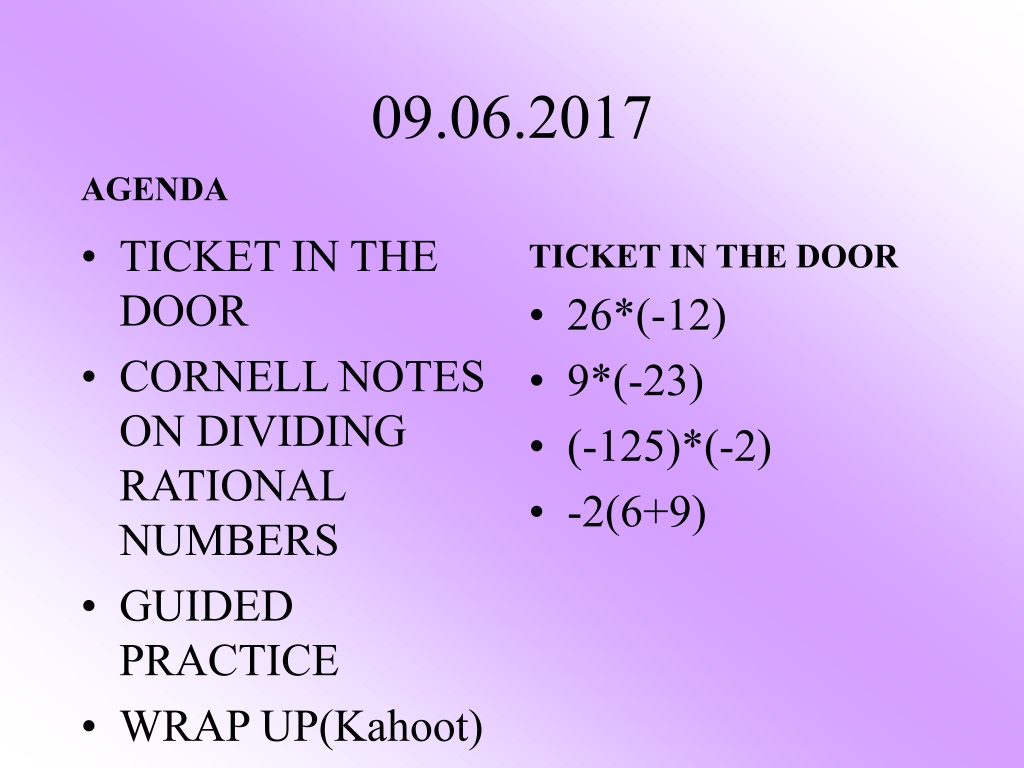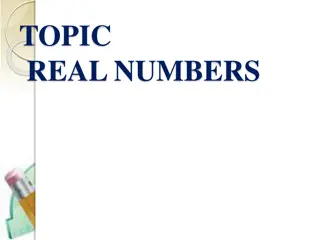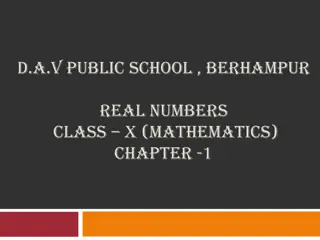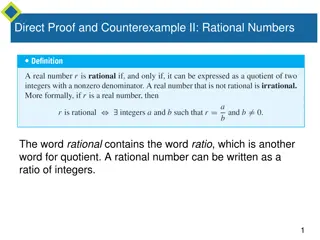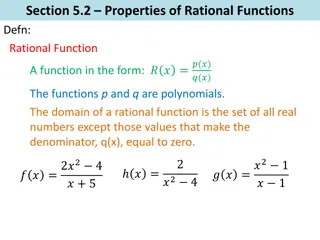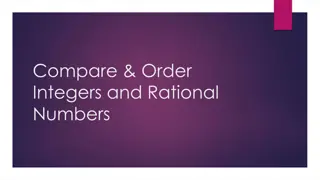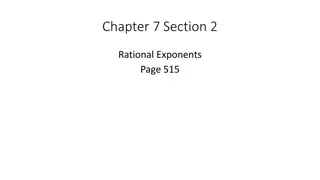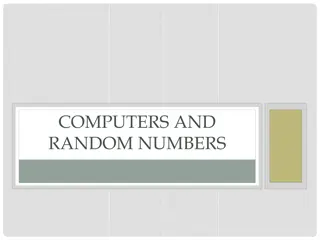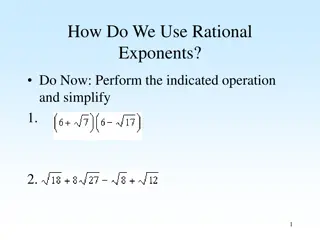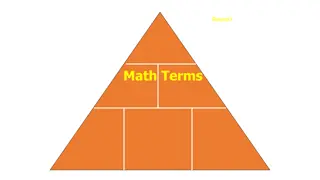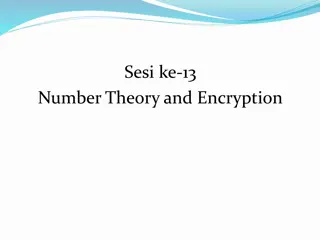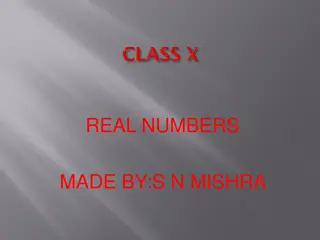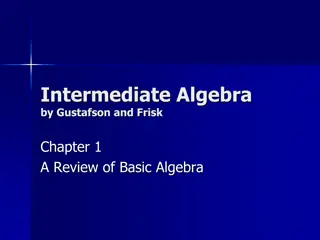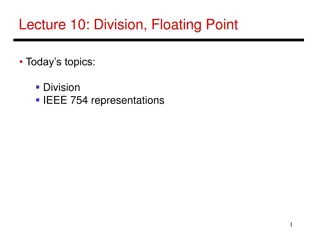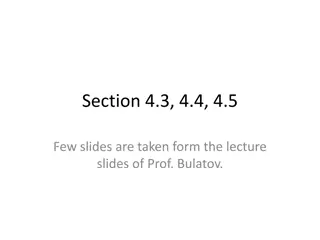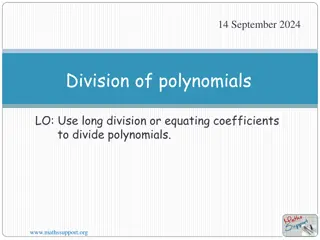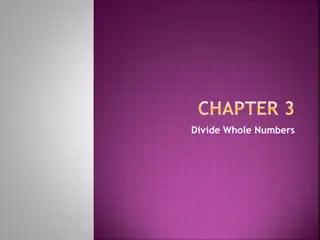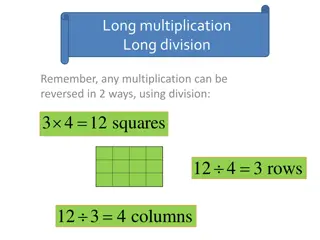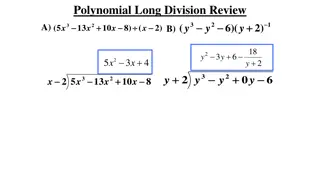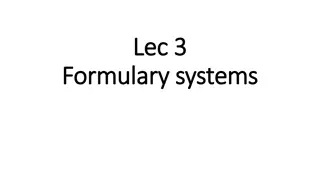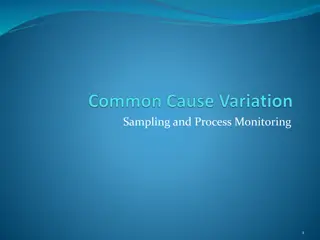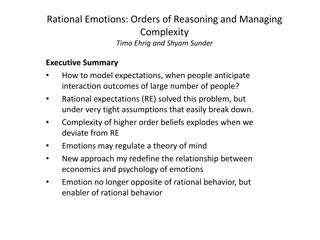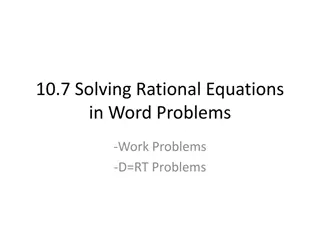Understanding Division of Rational Numbers
Explore the rules of dividing rational numbers, including scenarios with negative numbers, reciprocals, and using multiplicative inverses. Examples and practice questions are provided to reinforce understanding.
Download Presentation

Please find below an Image/Link to download the presentation.
The content on the website is provided AS IS for your information and personal use only. It may not be sold, licensed, or shared on other websites without obtaining consent from the author. Download presentation by click this link. If you encounter any issues during the download, it is possible that the publisher has removed the file from their server.
E N D
Presentation Transcript
09.06.2017 AGENDA TICKET IN THE DOOR CORNELL NOTES ON DIVIDING RATIONAL NUMBERS GUIDED PRACTICE WRAP UP(Kahoot) TICKET IN THE DOOR 26*(-12) 9*(-23) (-125)*(-2) -2(6+9)
Dividing Rules 1) If the numbers have the same signs then the quotient is positive. -32 (-8 )= 4 2) If the numbers have different signs then the quotient is negative. 81 (-9) = -9
When dividing two negative numbers, the quotient is positive. 1. True 2. False Answer Now
When dividing a negative number and a positive number, use the sign of the larger number. 1. True 2. False Answer Now
a b b a The reciprocal of is where a and b 0. The reciprocal of a number is called its multiplicative inverse. A number multiplied by its reciprocal/multiplicative inverse is ALWAYS equal to 1.
Example #1 7 2. 2 7 The reciprocal of is 2 7 7 2=1 =1 1 Example #2 1 3. The reciprocal of -3 is 1 1 1 3 3 1 =1 =
Basically, you are flipping the fraction! We will use the multiplicative inverses for dividing fractions.
Which statement is false about reciprocals? Reciprocals are also called additive inverses A number and its reciprocal have same signs If you flip a number, you get the reciprocal The product of a number and its reciprocal is 1 1. 2. 3. 4. Answer Now
Examples 3 4 5 8 1) When dividing fractions, change division to multiplying by the reciprocal. = 6 3 4 8 = 24 5 20 5
What is the quotient of -21 -3? 1. 18 2. -18 3. 7 4. -7 Answer Now
1 5 10 3 = ? . 2 1. 3 2 3 3 50 . 2. . 3. . 3 4. 50 Answer Now
